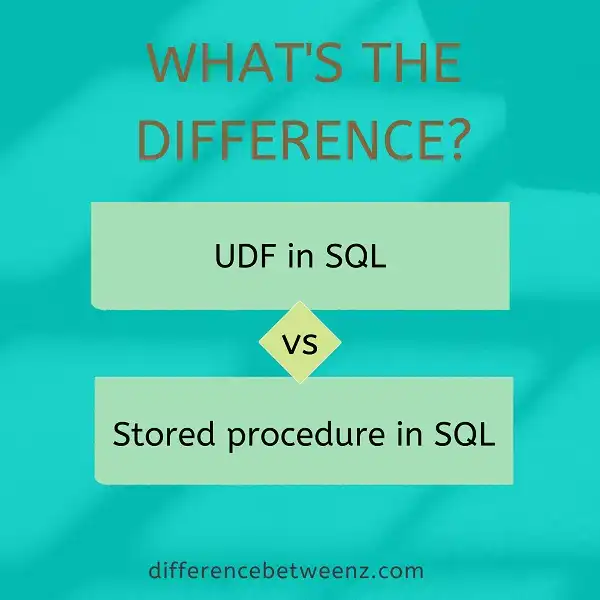Stored procedures and user-defined functions (UDFs) are two of the most important features in SQL. They both let you extend the power of SQL by letting you write code that executes when specified conditions are met. But what’s the difference between them? And which one should you use? In this blog post, we’ll take a look at the differences between UDFs and stored procedures, and we’ll give you some tips on when to use each one. Stay tuned!
What is UDF in SQL?
UDF in SQL is an acronym for User Defined Function. A UDF is a function that is written by the user and can be used to manipulate data within a database. UDFs are similar to stored procedures, but they are typically simpler and more specialized. UDFs can be used to perform calculations, format data, or return specific values from a set of data. UDFs are commonly used to extend the functionality of a database application.
For example, a UDF could be written to calculate the sales tax on an invoice or to format a customer’s name for display on a website. UDFs can be written in any programming language, but they are typically written in a language that is compatible with the database server. UDFs are typically stored in the database and are invoked by calling the function from within another query or program.
What is the stored procedure in SQL?
A stored procedure is a set of SQL commands that are stored in a database. They can be used to perform various operations, such as insert, update, or delete data. Stored procedures can also be used to calculate values, return results sets, or perform other tasks. In many cases, stored procedures can offer better performance than traditional SQL queries. This is because they can be pre-compiled and optimized by the database server. Additionally, stored procedures can be reused easily within an application.
Difference between UDF and stored procedure in SQL
SQL is a powerful programming language that enables developers to easily manipulate and query data. Over the years, there have been two main ways to extend SQL’s functionality: user-defined functions (UDFs) and stored procedures. Here’s a quick rundown of the main differences between UDFs and stored procedures in SQL:
- UDFs are typically written in a programming language such as C++ or Java and can be used anywhere in an SQL statement. In contrast, stored procedures are written in SQL and stored within the database. Because they’re stored within the database, they can be invoked directly by other applications without needing to be recompiled.
- UDFs are often used for simple tasks such as string manipulation or mathematical operations. Stored procedures, on the other hand, are more suited for complex tasks that involve multiple SQL statements or access to external data sources.
- So, which should you use – UDFs or stored procedures? The answer depends on your particular needs. If you need to perform a simple task that can be accomplished with a single SQL statement, then a UDF is probably your best bet.
But if you need to perform multiple SQL statements or access external data sources, then a stored procedure is probably a better solution. Whichever approach you choose, SQL provides a powerful toolkit for extending its functionality.
Conclusion
In this blog post, we’ve looked at the differences between user-defined functions (UDF) and stored procedures in SQL. We’ve seen that UDFs are a great way to encapsulate small pieces of logic, while stored procedures can be used for more complex tasks such as data manipulation or security.


